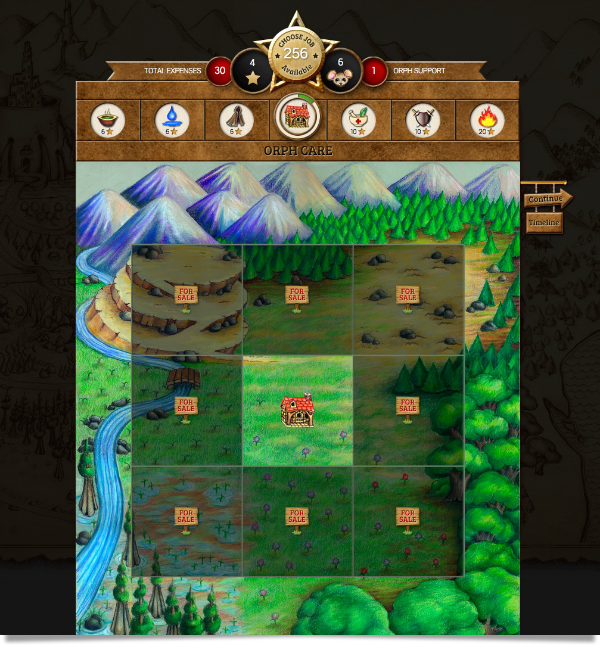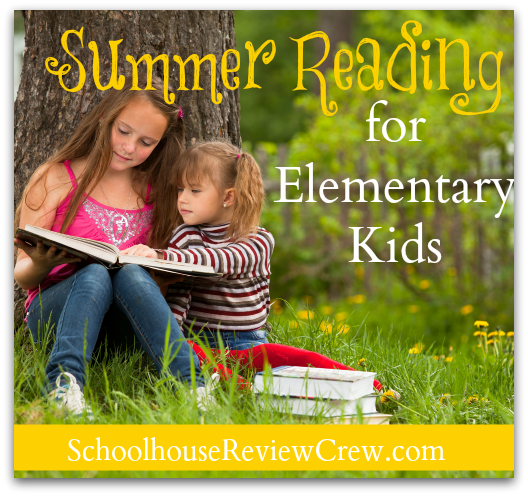Homeschool Curriculum Review: Star Toaster
If you’re looking for a neat new program to supplement the things your children are learning in your homeschool, or for a super fun alternative for summer reading this year, look no further than Orphs of the Woodland from Star Toaster! We were recently blessed with the opportunity to review this online program with both of the boys, and they really enjoyed it.
So, what is this Star Toaster of which I speak? Simply put, it’s a game. But it’s much more than that. Using the online program, students practice skills in reading, math, vocabulary, language, thinking skills, science, character, art skills, and life skills. The way it works is fairly simple, but it can take a while to master. The first thing you do when you set up your account is to name your character and fill out his “spy application.” You see, the main focus of Orphs of the Woodland is a book that your child will read online, one chapter at a time. (Currently, there’s just one book, The Treasure of HighTower. However, I have it on good authority that there will be a sequel soon.) The fun part is that, while the story is the same, the child’s character is the focal point of the story. The character is a squirrel, and each child gets to name him whatever he/she would like. In our family, Seahawk named his squirrel Templeton (after the rat in Charlotte’s Web) and Munchkin chose Tulane (after the porcelain bunny in The Miraculous Journey of Edward Tulane). Once the character is named, the fun begins.

This image shows the stats for your child, as he sees them whenever he logs into the program. These are the different aspects of the game portion of the program. In the parent dashboard, there’s also a stat for “pages read.”
The first thing to do, after the initial setup, is to read a chapter of the book. There are a total of 15 chapters, each roughly 30-40 pages. But the pages are really short – only about 3-4 paragraphs per page. When the child finishes reading the chapter, a section called “Jobs” opens up. This is where they use some of the things they learned in the chapter and do lessons to earn gold stars – “The Currency of the Woodlands.” Each job consists of a lesson and a question. If the question is answered correctly, gold stars are awarded. The number of stars is based on the child’s level in that particular subject. After a certain number of correct answers in a subject, they get a raise, and future questions will earn them more gold stars.

Here you can see a snippet of the story. The bar at the top shows how far into the story your child is. The red words are vocabulary words that are likely to show up in jobs later. By mousing over them, your child can learn the definition.
What do they do these gold stars they’re earning? That’s where the game portion of the program comes into effect. The gold stars they earn doing jobs can be used to “buy land,” or “build projects,” or “adopt more orphs.” The adoption of orphs happens automatically, but the other uses for gold stars are things your child will choose to do on his own. That’s the strategy of the game – the student has to decide what projects to build – and where to build them – to take the best care of his orphs for the least amount of “money.” You see, different projects (building a wheat field for food, for example) will reduce the cost of caring for the orphs. This means more money in your child’s pocket at the end of each chapter (gold stars for caring for the orphs are automatically deducted whenever a chapter is completed).

This is what the game portion of the program looks like. This image is from the Star Toaster website.
Now that I’ve (hopefully) explained how the program and game work, allow me to talk about how we used this. As I touched on at the beginning of my review, we used this as a supplement. It’s a fun little program, but definitely not enough in any one subject to take the place of another curriculum. I told the boys they needed to work on Star Toaster for at least 30 minutes a day, three days a week. Other than that, the timing was up to them (within reason, of course – we have lots of other computer curricula that need to happen as well). This schedule seemed to work well. It was long enough that they got a fair amount done during the time, but not so long that they were frustrated and overwhelmed with it.
I thought this program was really neat. The boys seemed to like it pretty well, too. It’s designed for kids in 4th-7th grade, so I initially requested it thinking Seahawk would just adore it because it wouldn’t “feel like school.” Well, the reading was such that this wasn’t the case. He didn’t hate it, but he definitely didn’t love it as much as I’d hoped. Munchkin, on the other hand, really had a good time with this program. He’s technically a little bit outside of the age range, but not so far. And his reading ability being high above his grade/age only helped him in this program.
There were a couple of things I would change with the program, but not much. First, I’d love to see the adoption of additional orphs (after the first, say, 4 or 5) optional. My boys had a difficult time getting enough gold stars to play the game effectively because their stars were always getting depleted nearly as fast as they could earn them with all the orphs they were required to adopt. Neither of the boys were ever able to earn enough stars to purchase additional land, and only enough to do a few inexpensive jobs (even while earning raises in all subjects and rarely getting a question wrong). This means that caring for their orphs is still quite costly, so I don’t see that magically adjusting in the next several days. The kids would say that they’d eliminate the Professor Forp character. This is one of the “teachers” during the lessons portion of the jobs, but I rather liked Prof. Forp. I thought he was funny and offered good information. Overall, though, this is a very worthwhile program to support the information your children are already learning in their other subjects. It’s a fun way to build skills, and it really is “learning that doesn’t feel like school” (despite what Seahawk says!).
Ready to try Orphs of the Woodlands for yourself (or rather, for your children)? You can get a free trial of the program, which includes the first 100 pages of the book and over 50 lessons/jobs, for up to 30 days. If you decide to continue it after your free trial is over, it’s very reasonably priced. For just $19.99, you can get a 60-day subscription for up to 3 students, and if your children don’t finish in that amount of time, additional months are just $6.99 each (also for 3 students). We definitely recommend checking out this fun book/game!
Blessings,





